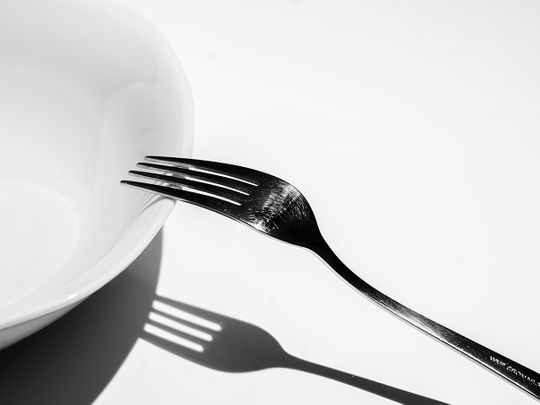
Whether you’re eating pasta, a bowl of watermelon, or some salad, you’re likely going to pick up a fork without a second thought. But at one point in history, it was a contentious object, full of dark, sometimes bizarre connotations.
Click start to play today’s Word Search, where you can spot a number of everyday kitchen items.
Serbian-American poet Charles Simic depicted just how odd this particular utensil is, in the 1960s, and shoed the strangeness and horror it inspires, in his poem ‘The Fork’:
It resembles a bird’s foot
Worn around the cannibal’s neck.
As you hold it in your hand,
As you stab with it into a piece of meat,
It is possible to imagine the rest of the bird:
Its head which like your fist
Is large, bald, beakless, and blind.
If you think about it, forks are perhaps the most intriguing of all the cutlery in our kitchen drawers. For thousands of years, humans got along just fine without using forks. Knives, of course, were the oldest utensils, having descended from the sharpened hand axes that ancient humans used as tools.
Spoons, too, had an established place at the table, having come about organically from whatever scoop-shaped object was available for people to use, in the environment around them. The word for spoon comes from both Latin and Greek, from an older word, meaning snail shell, while the Anglo-Saxon ‘spon’ translates to chip – like a chip off a rock or stone.
But forks? They were never associated with food. Even the ones in our drawers look like little tridents for a miniature Poseidon. In fact, in ancient Greece, forked tools were often depicted in artwork as part of the realm of the water deity – but at the Greek table, people used spoons, knives and their hands to eat.
Forks did become widespread in the East, however. In the 11th century, they were used by the Byzantine empire. But whenever the fork tried to make inroads in the West, it was usually met with bitter resistance. According to the 1989 book, A History of Venice, an illustrated manuscript from the same period showed two men using two-pronged utensils at a table, and St. Peter Damian, an ascetic hermit, criticising a Byzantine-born Venetian princess for her table etiquette: “[S]uch was the luxury of her habits … [that] she deigned not to touch her food with her fingers, but would command her eunuchs to cut it up into small pieces, which she would impale on a certain golden instrument with two prongs and thus carry to her mouth."
In the Middle Ages, when Italian princess Catherine de Medici became queen, by her marriage to Henry II in France, she brought with her a variety of new foods for the region, like artichokes and ice creams – and the controversial forks. People were starting to get used to it, since it was hefty enough to hold down a cut of meat, with variations that were smaller and slimmer for eating sweets at the end of a meal.
But it was only in the beginning of the 19th century that the fork became firmly established on the French table and beyond. The invention of silver-plating techniques, and the expansion of the consumer market led to dozens of types of forks – from oyster and lobster forks to bread, salad and pastry forks.
Once forks became commonplace, their form, style and shape was improved and experimented upon. In the early 20th century, designers like Charles Mackintosh, Henry van der Velde and Josef Hoffman designed forks for their buildings, along with windows, chairs and lamps, in an architectural movement called Gesamtkunstwerk – where their aim was to produce a total work of art.
Now, forks are in every house, in every kitchen. What was once considered to be silly or gauche, is something we use without a second thought.
What’s next for the future of utensils? Play today’s Word Search and take a guess at games@gulfnews.com.








